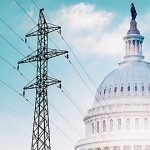
Nicholas Anthony
Millions of Americans do not have a bank account. Known as the “unbanked,” these Americans are often referred to in discussions of financial inclusion. As it stands, the latest survey from the Federal Deposit Insurance Corporation shows that there are currently 5.6 million unbanked households. However, as policymakers read the survey and begin to craft responses, they should take note of all of the data provided rather than the total number of unbanked households alone.
Given that more than 70 percent of the unbanked routinely say they are uninterested in having a bank account, perhaps it is time to redefine the term “unbanked.”
To understand why this distinction is necessary, first consider a more familiar statistic: the unemployment rate.
Although reported as just the “unemployment rate,” the official unemployment rate reflects not just the number of people who are unemployed, but rather the number of people who are unemployed and are actively seeking employment. The general idea is that including college students solely focused on their studies, full-time parents solely focused on caring for children, and the like would give an inaccurate picture of the labor market. Sure, these people do not have jobs, but at the same time they don’t want jobs.
Turning back to the unbanked, there is a similar distinction to be made. Much like interest in a job should be factored into the unemployment rate, so too should interest in a bank account be factored into the unbanked rate. Ideally, this interest would be quantified as the number of people who have tried to open an account in the last six months. Although this exact information is not currently available, the Federal Deposit Insurance Corporation’s biennial survey of unbanked households does have a question that asks unbanked Americans how interested they are in opening an account, and the numbers are astounding.
Over 70 percent of unbanked Americans routinely say they are not interested in having a bank account (Figure 1).
By adjusting for the number of people interested in having a bank account, suddenly the problem becomes drastically different. What were 5.6 million households being classified as unbanked suddenly shrinks to 1.6 million households.
Is this still a problem? Yes. It may be a small portion of the population, but this number shows there are 1.6 million households who want a bank account and don’t have one. That is certainly a problem for these Americans.
The difference is that now we know this is not a problem that requires overhauling the entire financial system—something many people have suggested in calls for central bank digital currencies and postal banking. Rather, it suggests that if any approach is taken, it should be targeted and limited in scope.
As policymakers read the Federal Deposit Insurance Corporation’s latest survey on the unbanked, they would be wise to keep this distinction in mind.






